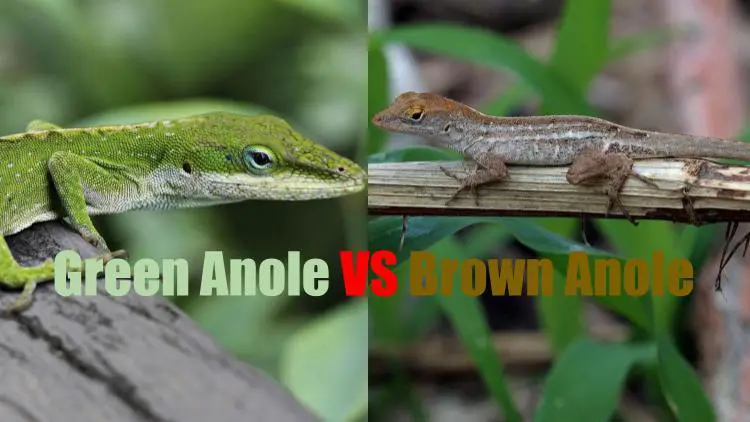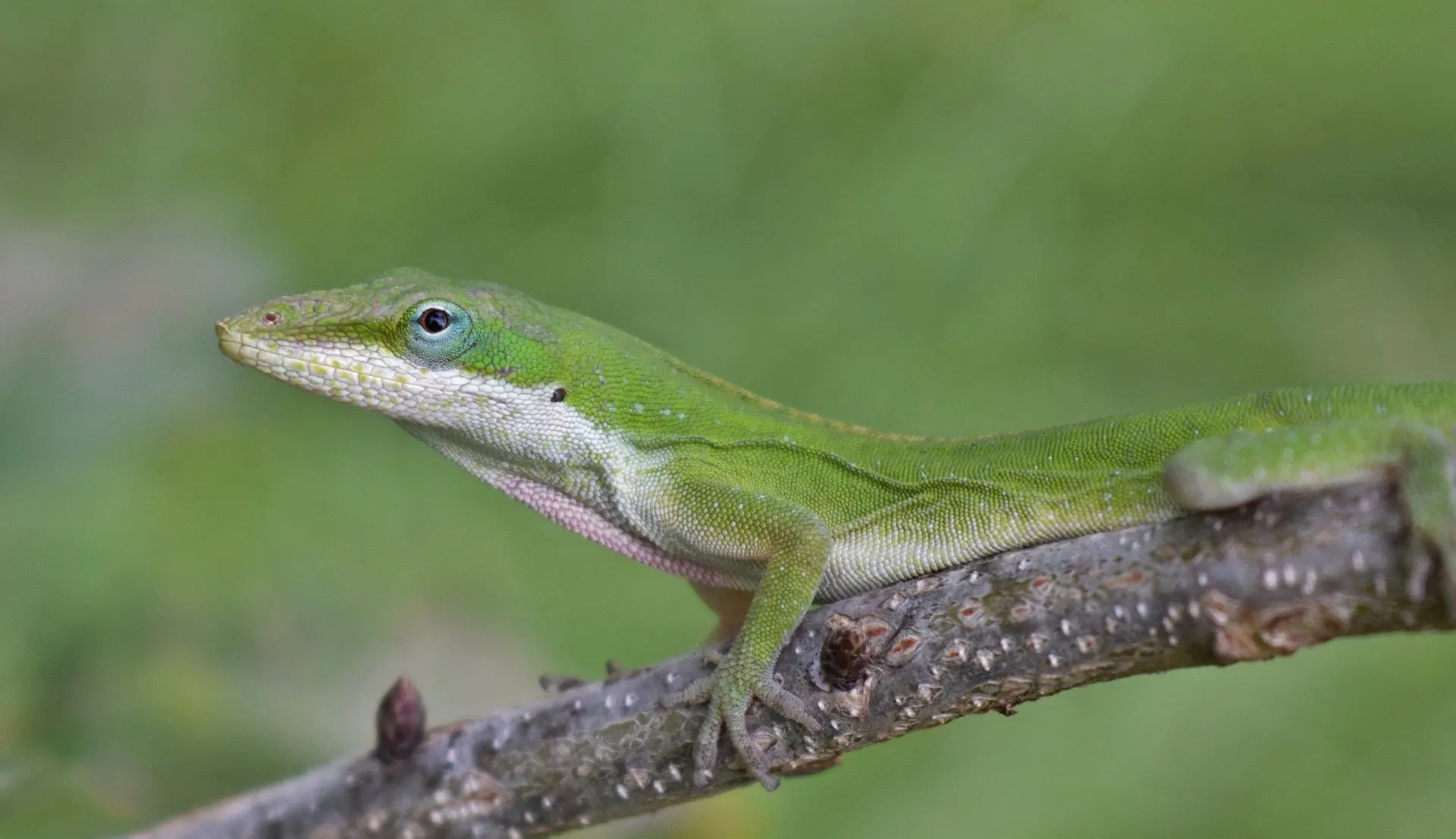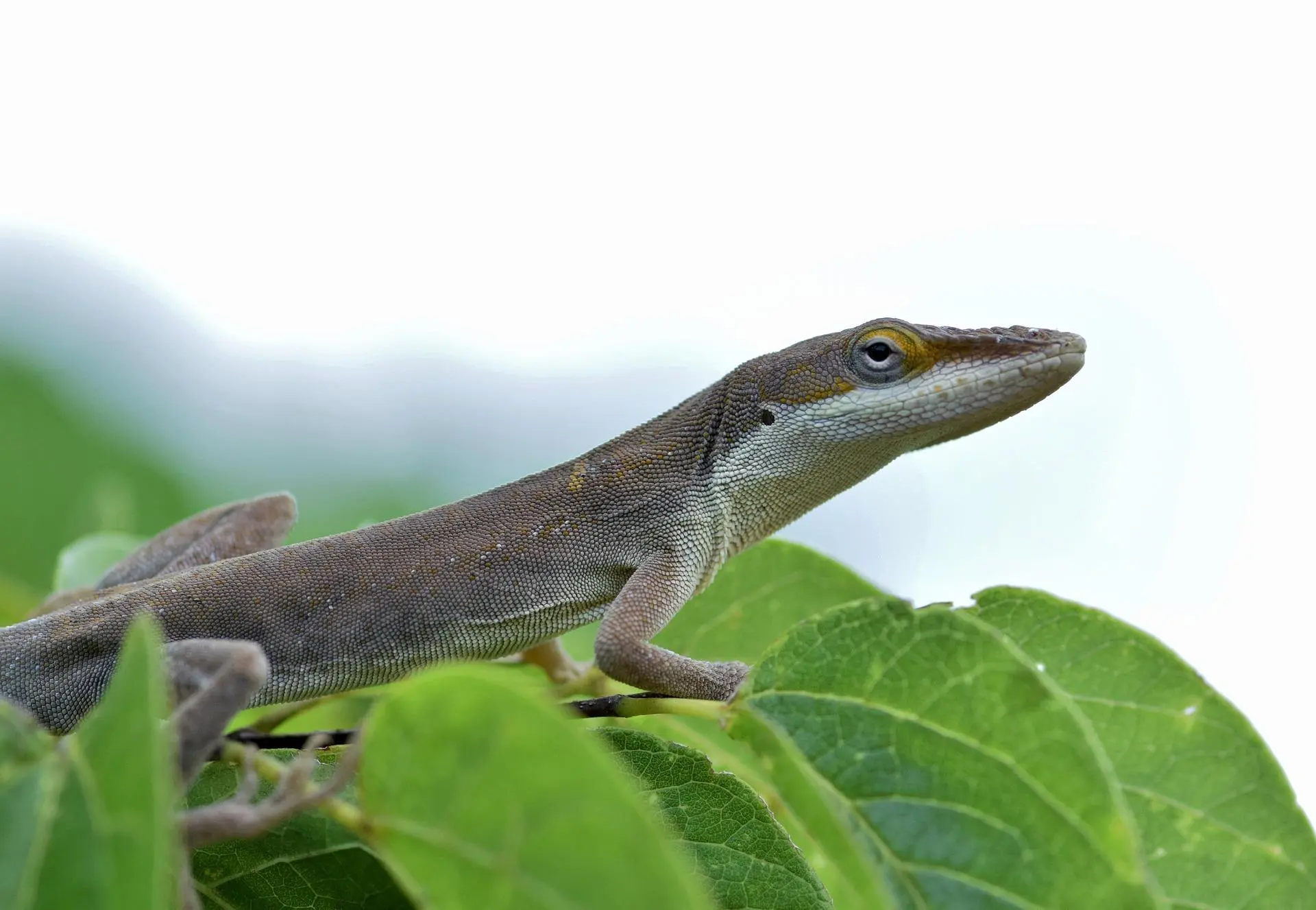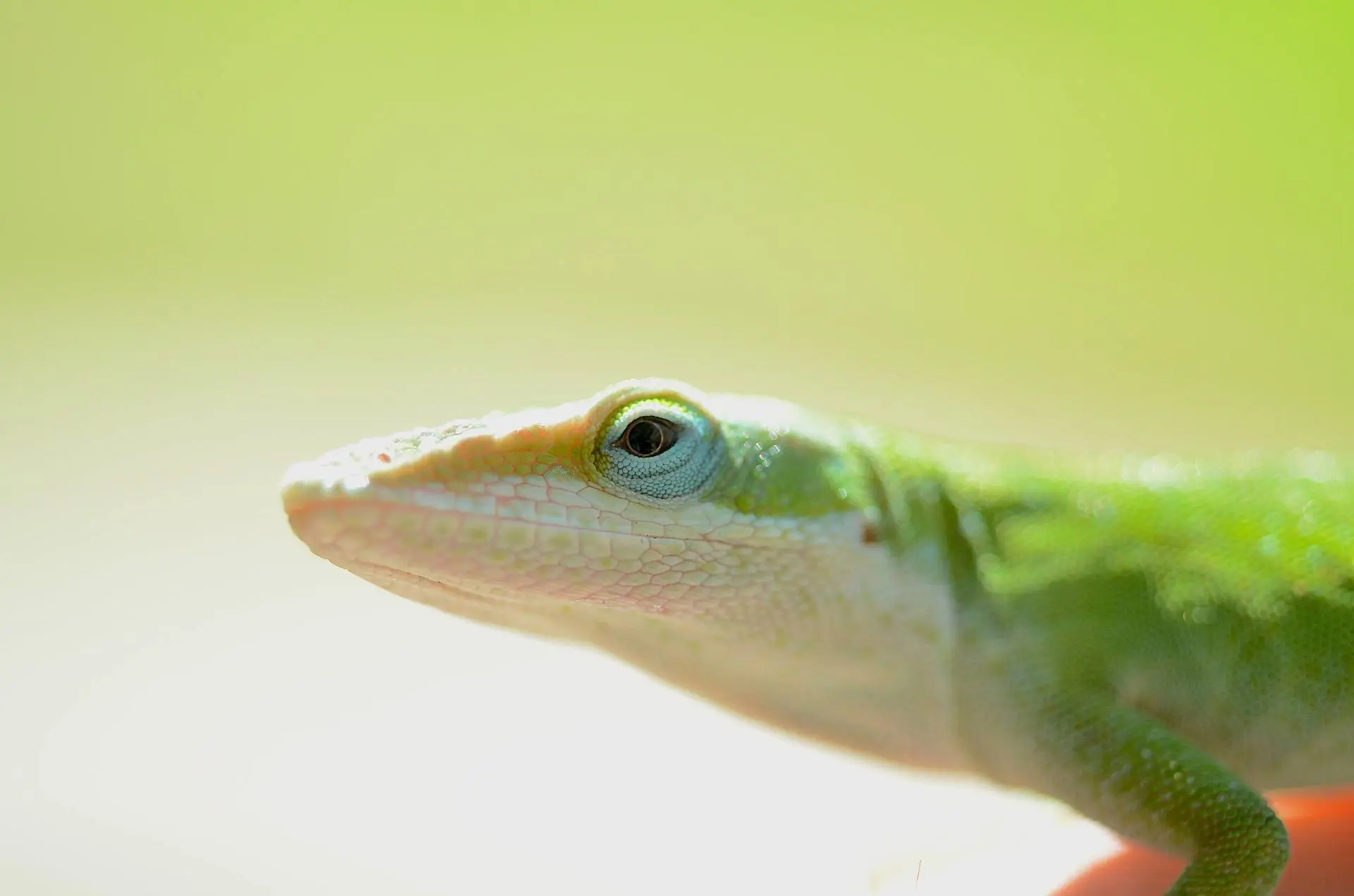Anoles are lizards often found in forests and gardens in the United States. They are also sold in pet shops to be kept as pets.
The green and brown alone are native to the United States and are very similar, even though they vary in coloration. This article will compare green anole vs brown anole in all aspects.
Further reading:
Coloration
Green Anole – Green coloration
Brown Anole – Some shade of brown. The shade can vary
Verdict – Only real difference in terms of appearance is the coloration.

Appearance
Green Anole
Lean body with a triangular head and a dewlap below the jaw, which is used in territorial displays.
The dewlap on the green anole lizard is pink or in some instances red.
Tends to change color. This anole can be bright green or dull brown. The color is not matched to the surrounding leaves. Their color is prompted by light and temperature, along with a level of excitement.
A green anole will be brown when basking, green when scared and asleep. Sunlight will determine the vividness of the color.
Brown Anole
This anole also has a lean body with a triangular head. They also have a dewlap below their jaw.
The brown anole lizard shows a red/brown dewlap which is dark in color.
The brown anole is also able to change colors, though it remains brown with stripes, bars or spots on its back. Brown anoles are able to change hues subtly.
A brown anole being aggressive will change the color of dewlap to black, when relaxed the anole may lighten in shade.
Verdict
Both varieties offer the same appearance with one of the differences being that the green anole is able to change its appearance to brown, while the brown anole remains brown and cannot change to green.
The green anole changes color more than the brown based on its mood.
Size
Green Anole
Small lizard with males reaching eight inches in length and females reaching six inches in length.
Brown Anole
Similar sizes to the green anole with males reaching approximately eight inches and females in the region of six inches in length.
Verdict
Both species are similar in size.
Lifespan
Green Anole
In the wild, this anole will live up to three years of age and up to six years in captivity.
Brown Anole
This anole also offers a short life span of three years in the wild, but can live up to six years in captivity.
Verdict
Both anole species have the same lifespan.
Natural Habitat

Green Anole
Green anoles are native to the United States and are found in Florida, Carolina and Tennessee. It is the only species native to the US.
The green anole tends to live higher up in trees and bushes. They are often seen walking along fences. Only the hatchings tend to live on the ground.

Brown Anole
This anole is actually native to the Caribbean, Bahamas and Cuba. Each location offers a different subspecies. All subspecies have managed to make their way to Florida and South Georgia, where it is impossible to tell the subspecies apart and where they came from.
The brown anole tends to live on the ground, which is easier for them to blend in and hide from predators.
Verdict
Green anoles are the only native species in the United States.
Green anoles live in trees and shrubs where they are higher off the ground and can blend in with the greenery, while the brown anole tends to live more on the ground to blend in with their natural habitat.
Diet
Green Anole
The green anole is insectivorous and eats any insects that can fit into their mouths. They also eat smaller anoles as part of their regular diet. They love crickets, roaches and mealworms.
The anole requires water, but they don’t always drink out of a water dish. You need a shallow dish to reduce the risk of drowning.
Brown Anoles
Consumes a diet of insects that can fit in its mouth and smaller anoles. These anoles also eat a varied insect diet of small roaches, crickets and mealworms.
They also require water, but may not drink as expected, rather looking for water on leaves and branches, which is why misting now and then maybe useful to ensure your anole gets the hydration it needs.
Green anole hatchings tend to live on the ground, where the brown anoles are searching for food, making them an easy target.
Verdict
No difference in diet between the two species, except the risk of the brown anole eating the green anole hatchings on the ground.
In Captivity
Green Anole
Common pet lizard, easy to maintain and a great starter lizard for any family. They require vertical enclosures as they love to climb.
Make sure there is plenty of foliage to provide excellent hiding places for the anole to feel secure.
They require around eight hours of sunlight each day with basking temperatures around 90ºF.
Brown Anole
This is also a common reptile as a pet offering easy maintenance with eight hours of sunlight and 90ºF basking temperate.
In addition to this, the brown anole loves to climb and hide, so ensure you provide plenty of vertical climbing places with fines and plants.
Verdict
Both species require the same habitat requirements when kept in captivity, making both an easy first-time reptile pet for any family.
Interesting Anole Facts

Anoles are better known as Florida yard lizards. Anoles do not change their colors like a chameleon, the green anole lizard will be brighter in color when healthy and in a green habitat with reduced stress. The brown color may shine through when the lizard is basking. The green may be more vivid when the anole is stressed. The brown anole’s hormones will turn his color of brown to gray or back, this is determined by temperature.
Male and female anoles of both species have dewlaps. A display of the dewlaps is used when females select a suitable mate.
Around ten percent of all anoles will lose their tails by shedding it on purpose. Just like leopard gecko, anole tails do grow back after a few weeks. Tails are used for balance when climbing.
Dude they are both green anoles like really
Should be fixed. Thanks for pointing out 🙂
I have brown anoles living on my porch. If they are territorial, why are they together? Today 3 hatchlings on my porch. Some are older so they are multiplying. Adults are also still here
i am getting two anoles to breed green anoles so maybe you guys could help me with that?
Why do some male green Anole have a raised fin on their back and neck? We have seen these around our home a few times in South Carolina
I grew up in northeastern Florida and enjoyed a time when Green Anoles were the only lizard in our region. A Beautiful little lizard! I’d catch them and turn them on their backs in my left palm and hold them still with my thumb while I gently rubbed the belly with my right index. After a few seconds of rubbing the lizards actually fall asleep! I would lift my thumb and hold the lizards, asleep on their backs, in my palm for sometimes 10-15 seconds before it would wake up.. then immediately jump to safety. Also something cool I noticed about greens is you can see all the way though their heads by way of it’s ear hole!!! The Brown Anoles moved into the area in the late 90’s and is a much faster and harder to catch lizard. The males look like dinosaurs up close… not cute like the greens. The fins on the male’s backs are more pronounced and their bite seems to be stronger than the green anole.Furthermore, the brown anoles here have a somewhat more angled head than green. You can plainly see the difference by comparing the photos in this article.
Thank you Erik. I am from Texas. Would like to help more green anoles in my back yard survived. Any suggestion ?